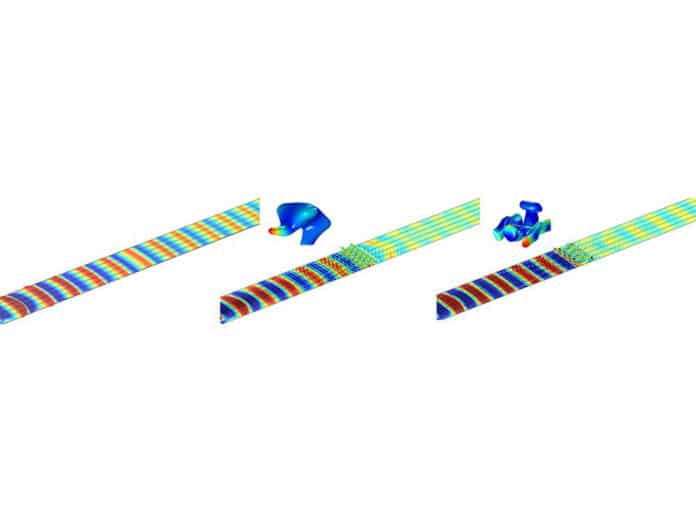Researchers from the Penn State College of Engineering have created fabricated, patterned sheets with tunable properties, known as metasurfaces, that regulate surface waves. This type of strategic design is known as the topology optimization method (TOM).
Their newly designed metasurface barrier is made from resonating — or vibrating — structures to stop plate waves from propagating into a specific area. Surface waves are long-range and can travel a long distance without losing much energy, but the resonant structures of the metasurface barrier can stop them.
These structures are tuned to a specific frequency; they match the predefined target frequency of surface waves propagating across an aluminum plate. The design methodology is formulated as a topology optimization problem using TOM.
The TOM aims to generate a bandgap around a specific frequency, automatically designing optimally designed resonators with particular resonance and antiresonance characteristics.
Parisa Shokouhi, professor of engineering science and mechanics, said, “In this paper, we demonstrate that the methodology can design resonators for metasurfaces capable of suppressing plate waves, called Lamb waves, but this method can be extended to design resonant metasurfaces that can control other types of guided waves regardless of the frequency range.”
“It is the first time TOM — initially designed in the 1980s to solve structural design problems — has been applied in this way. This systematic design strategy can be generalized further, presenting a potential approach for wave control in other areas, such as acoustics.”
Journal Reference:
- Daniel Giraldo Guzman et al. Design of resonant elastodynamic metasurfaces to control S0 Lamb waves using topology optimization. JASA Express Letters 2, 115601 (2022); DOI: 10.1121/10.0015123
